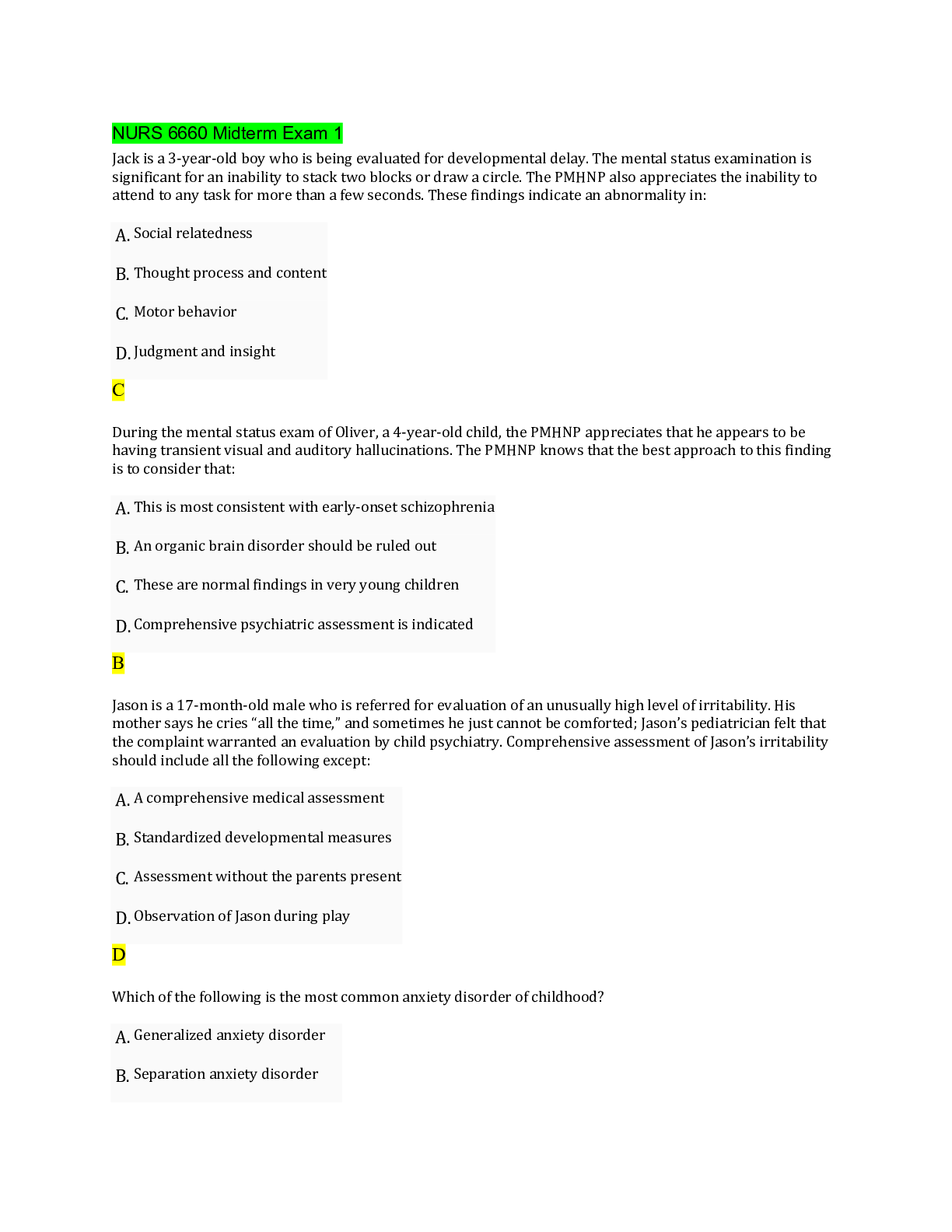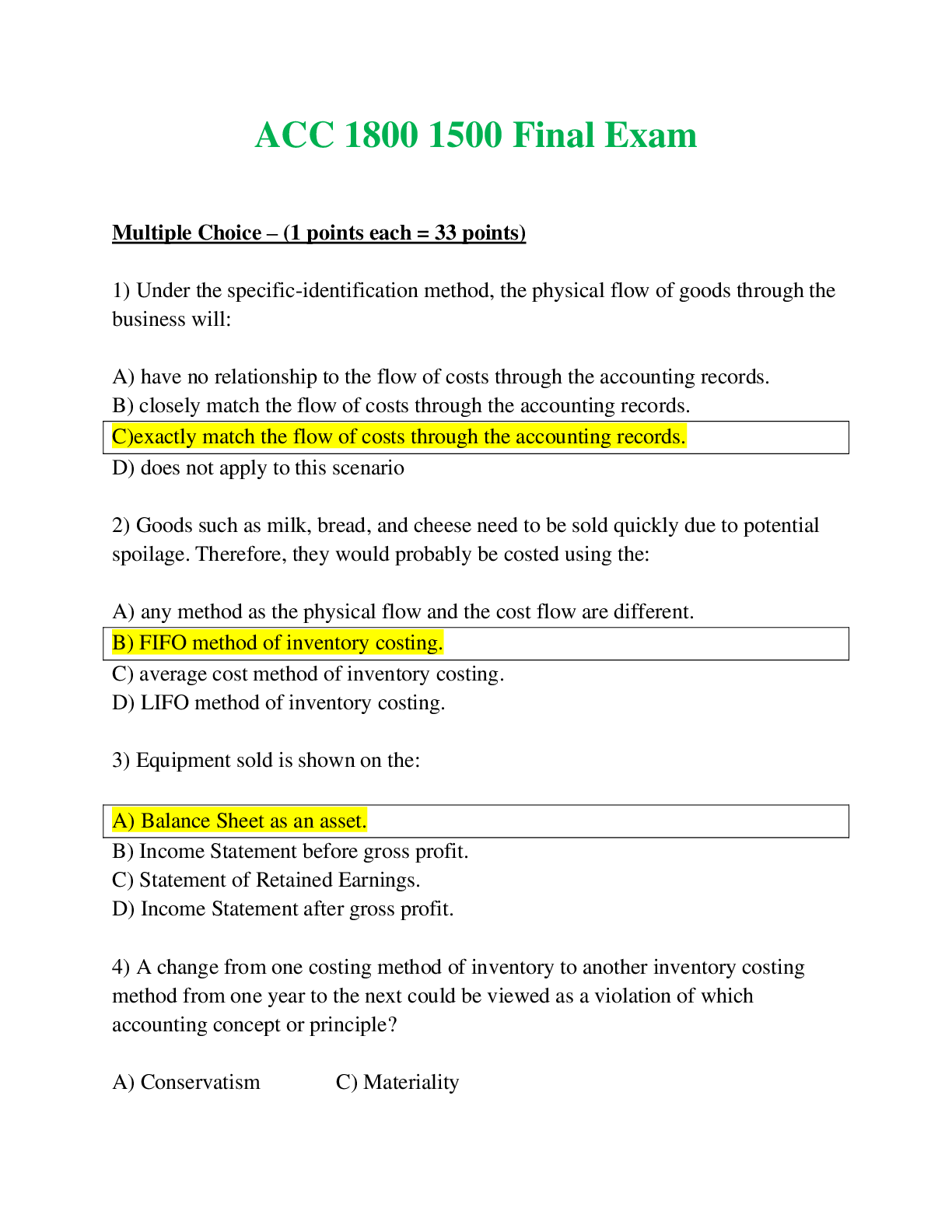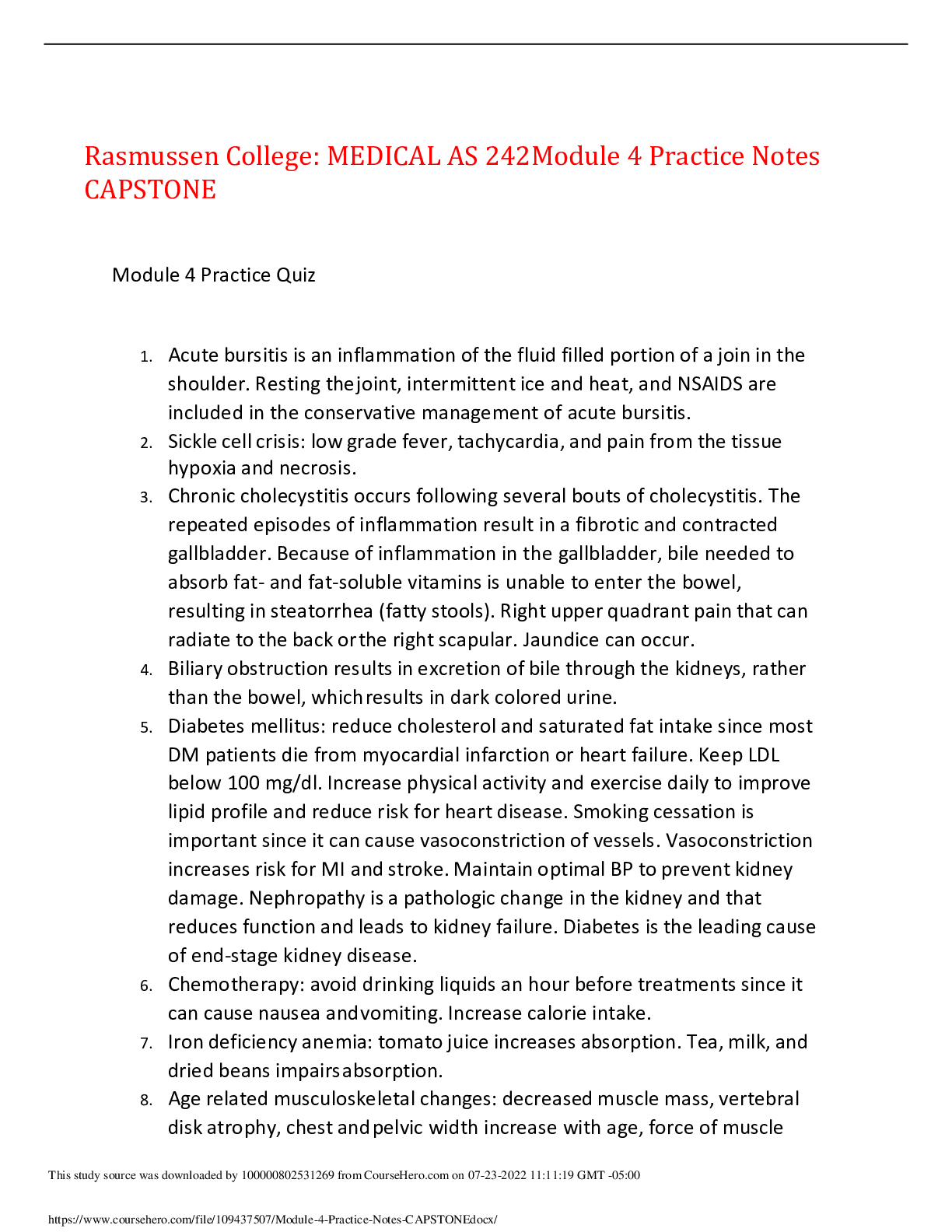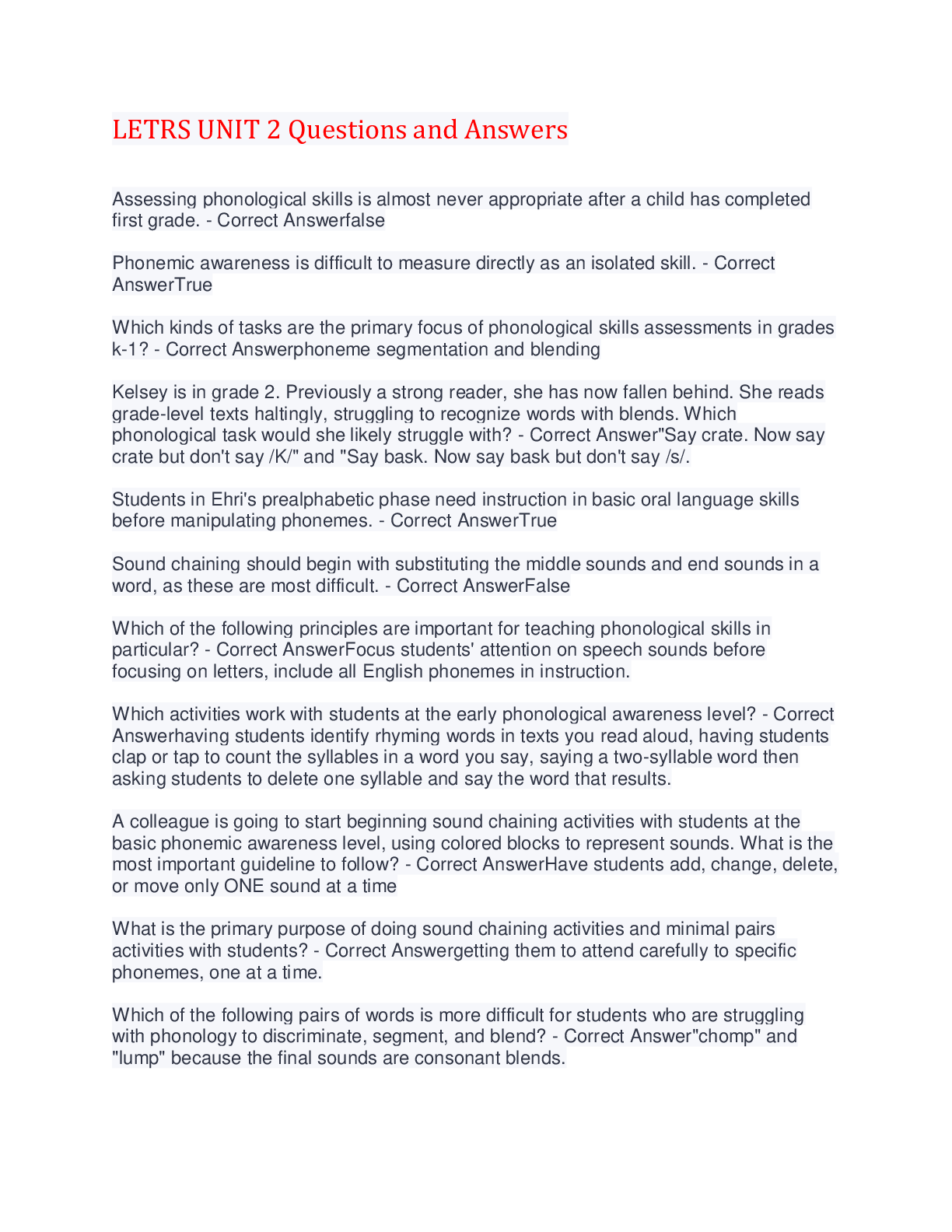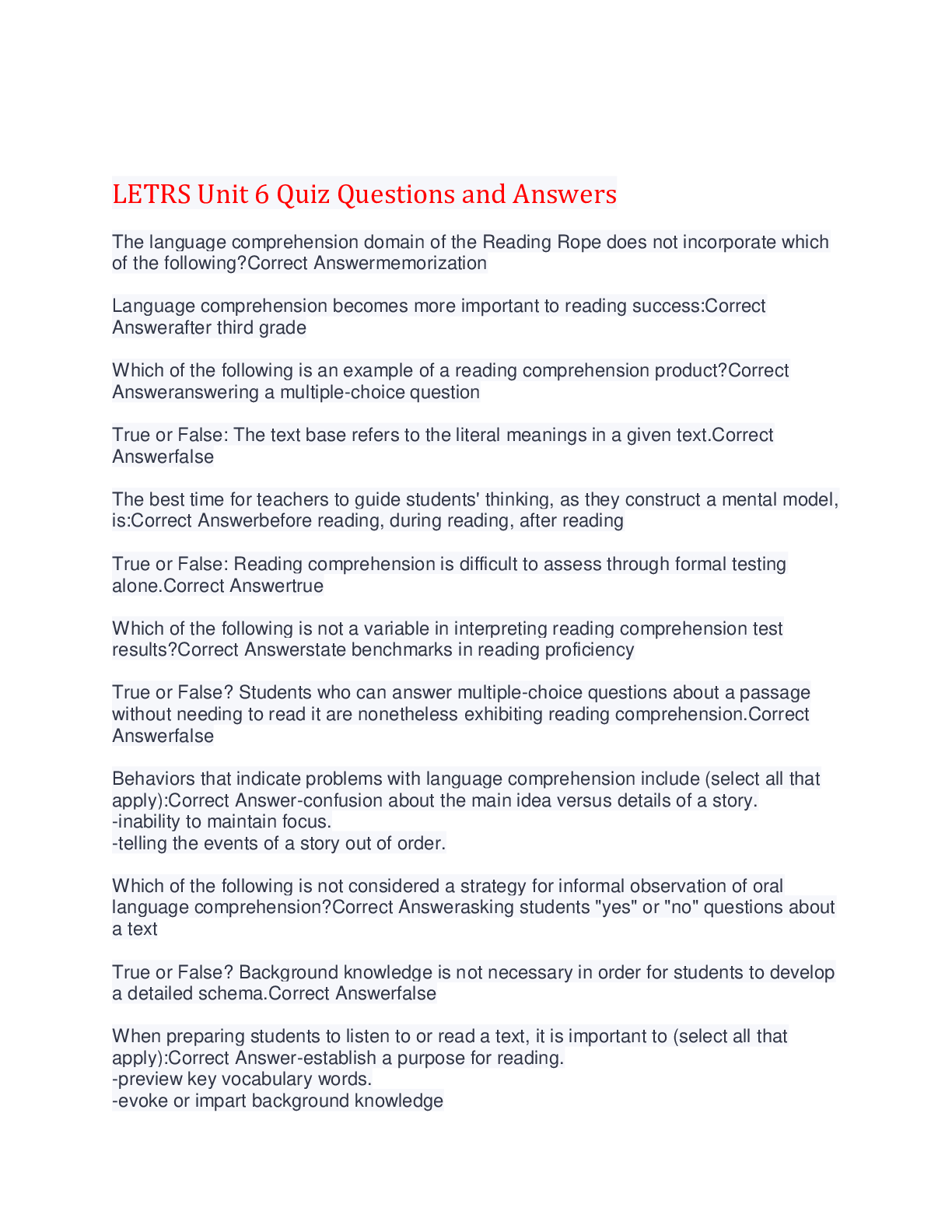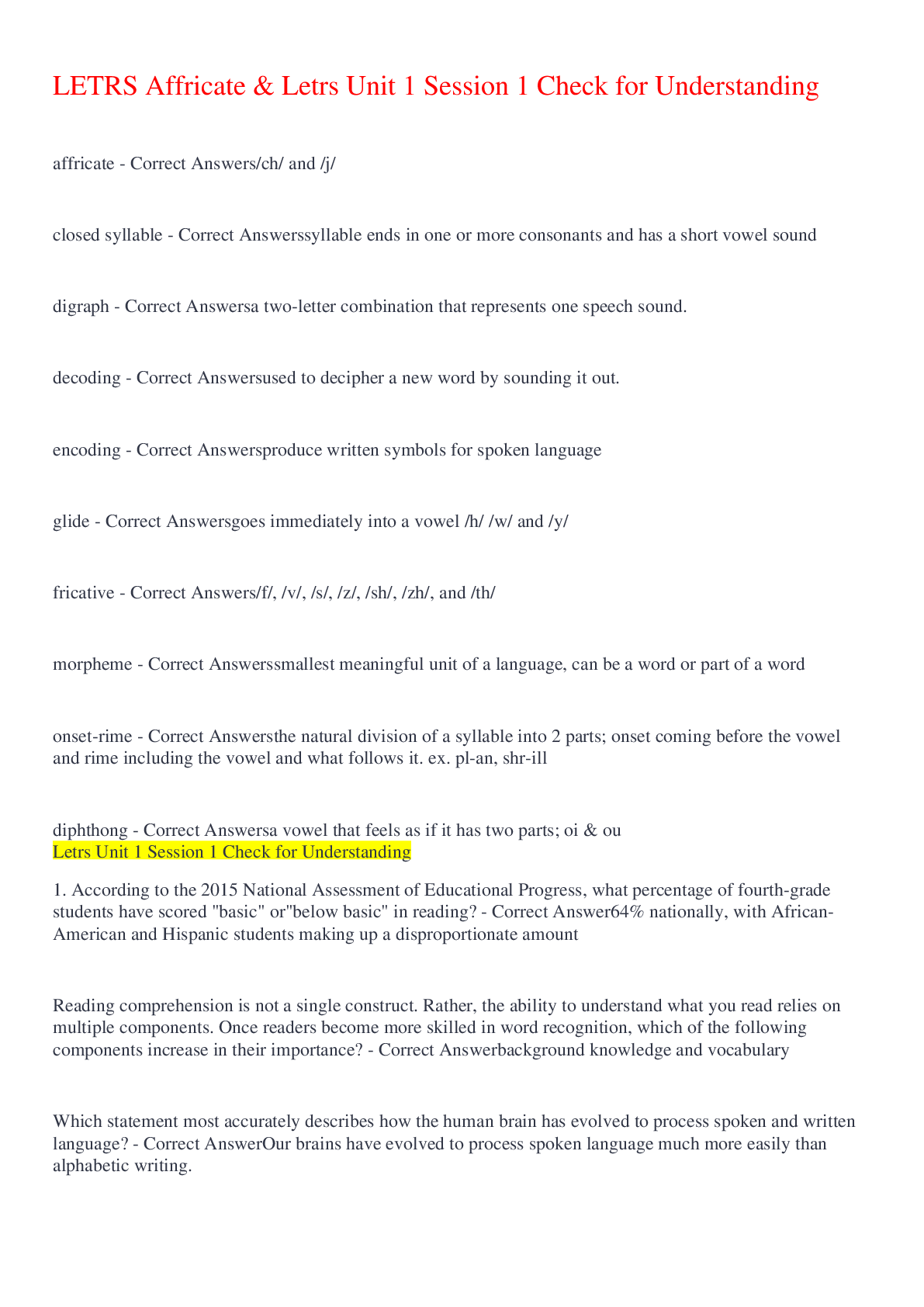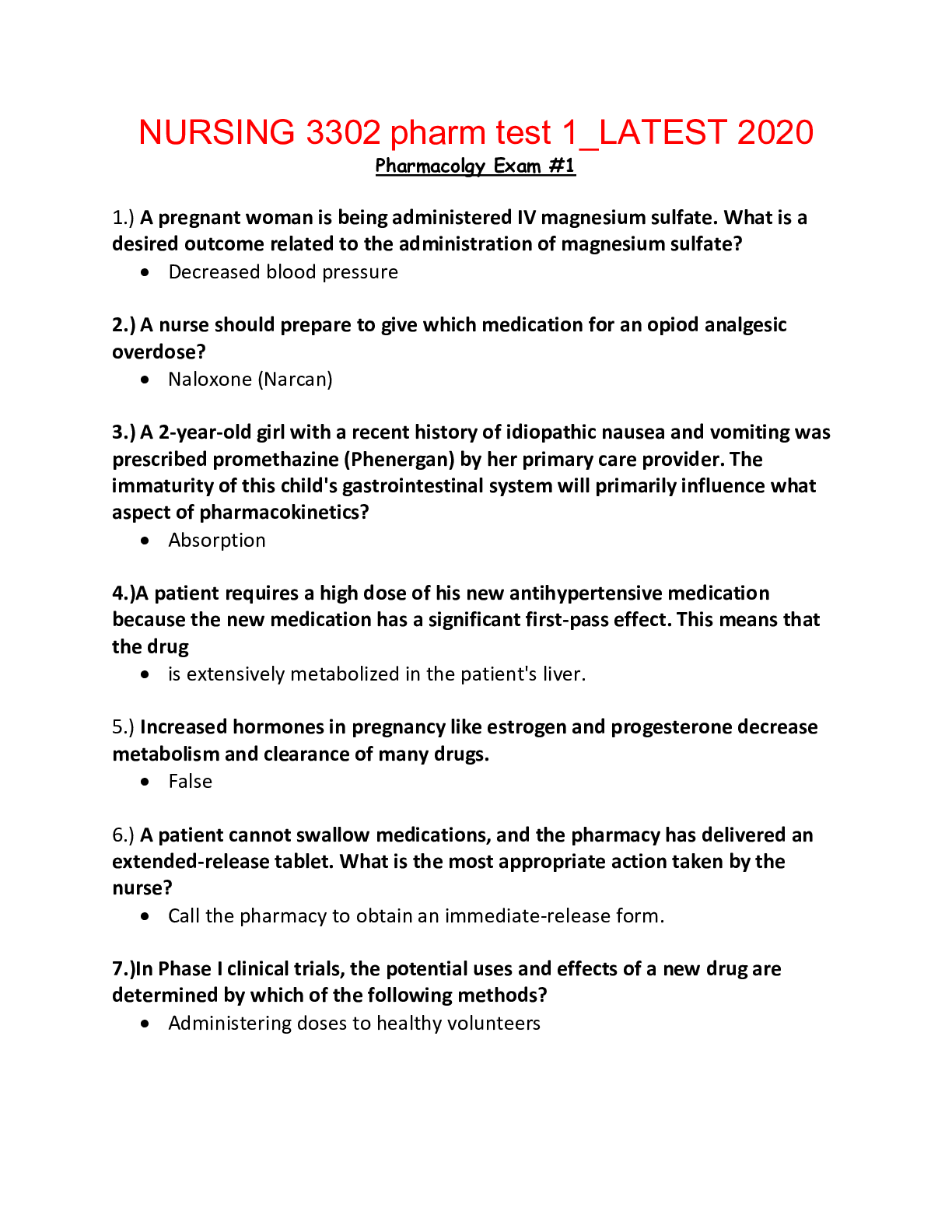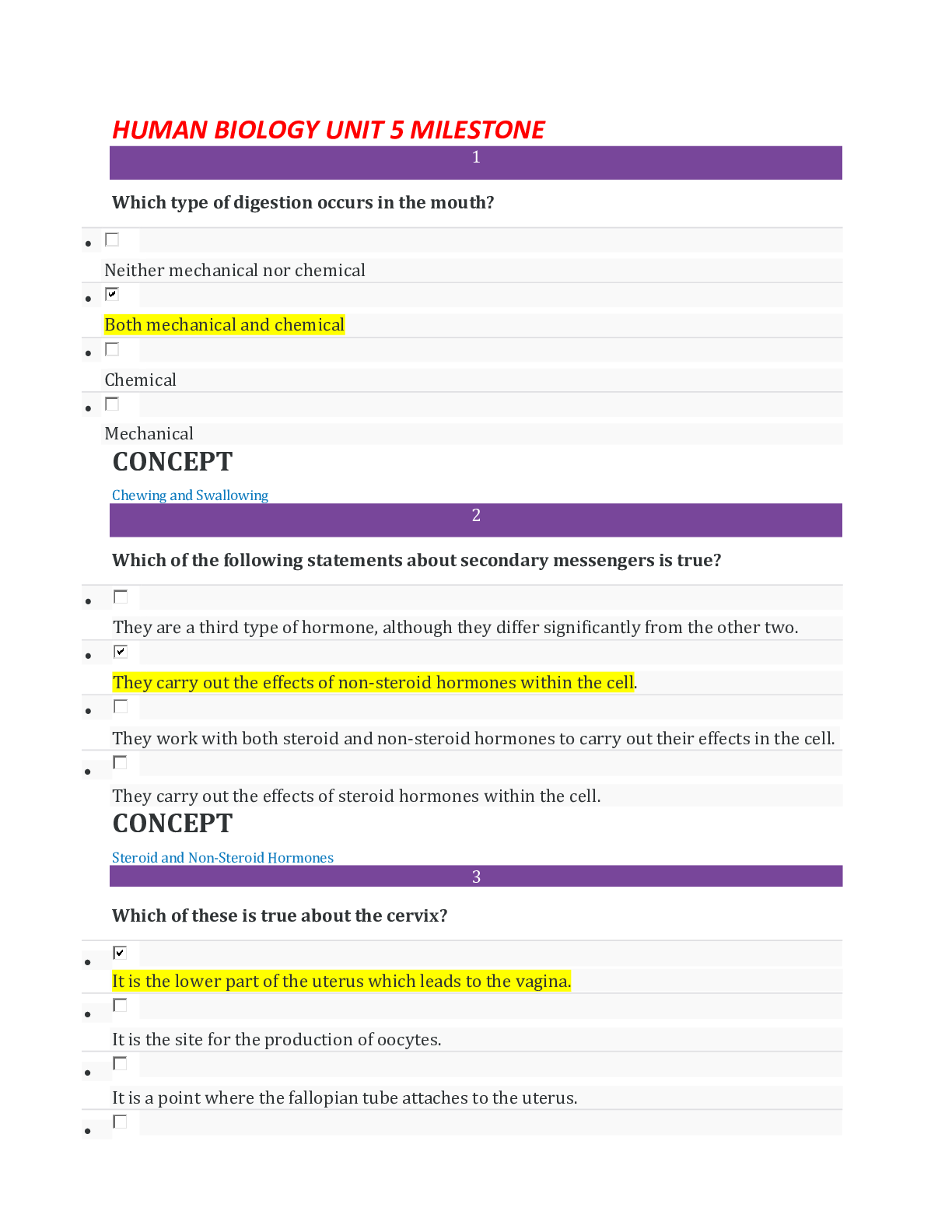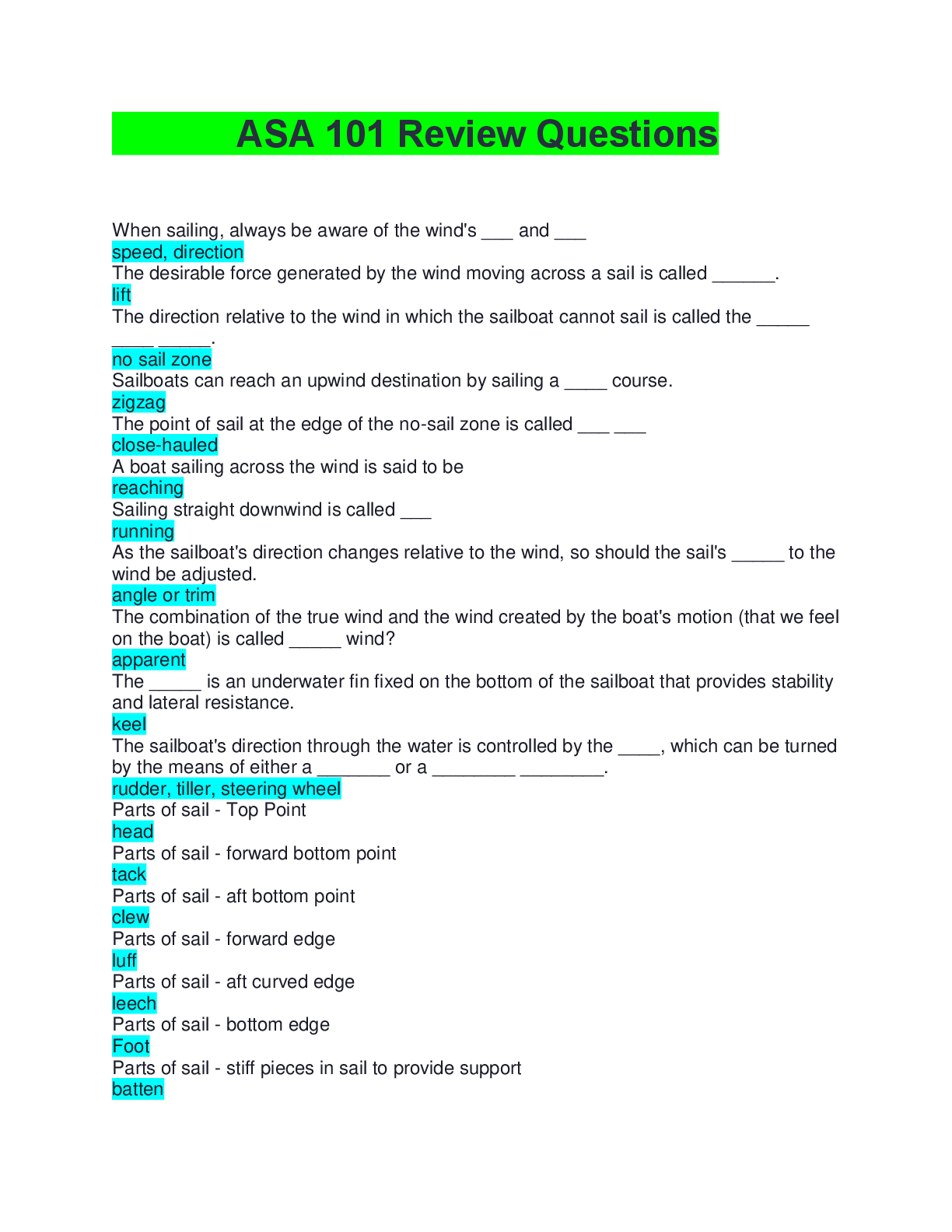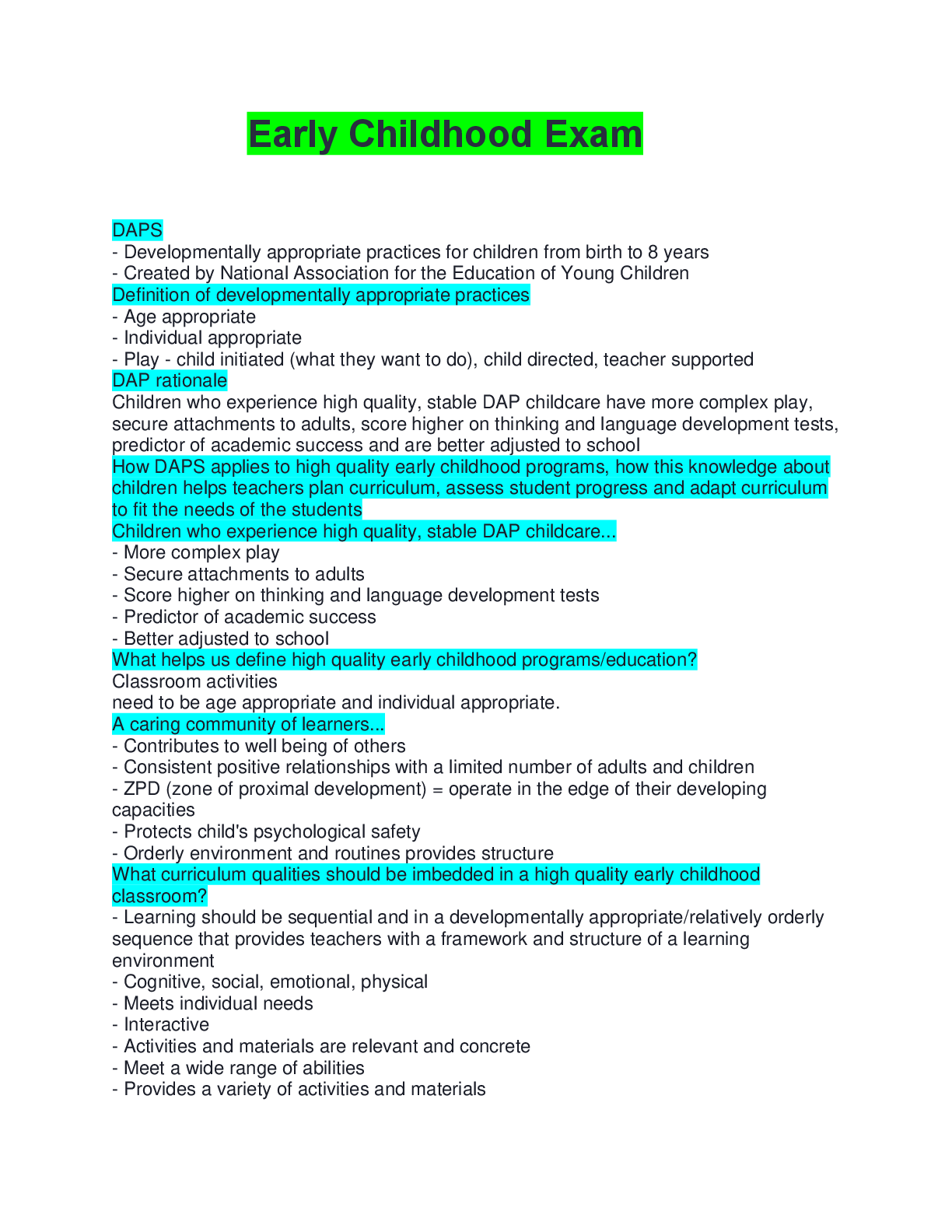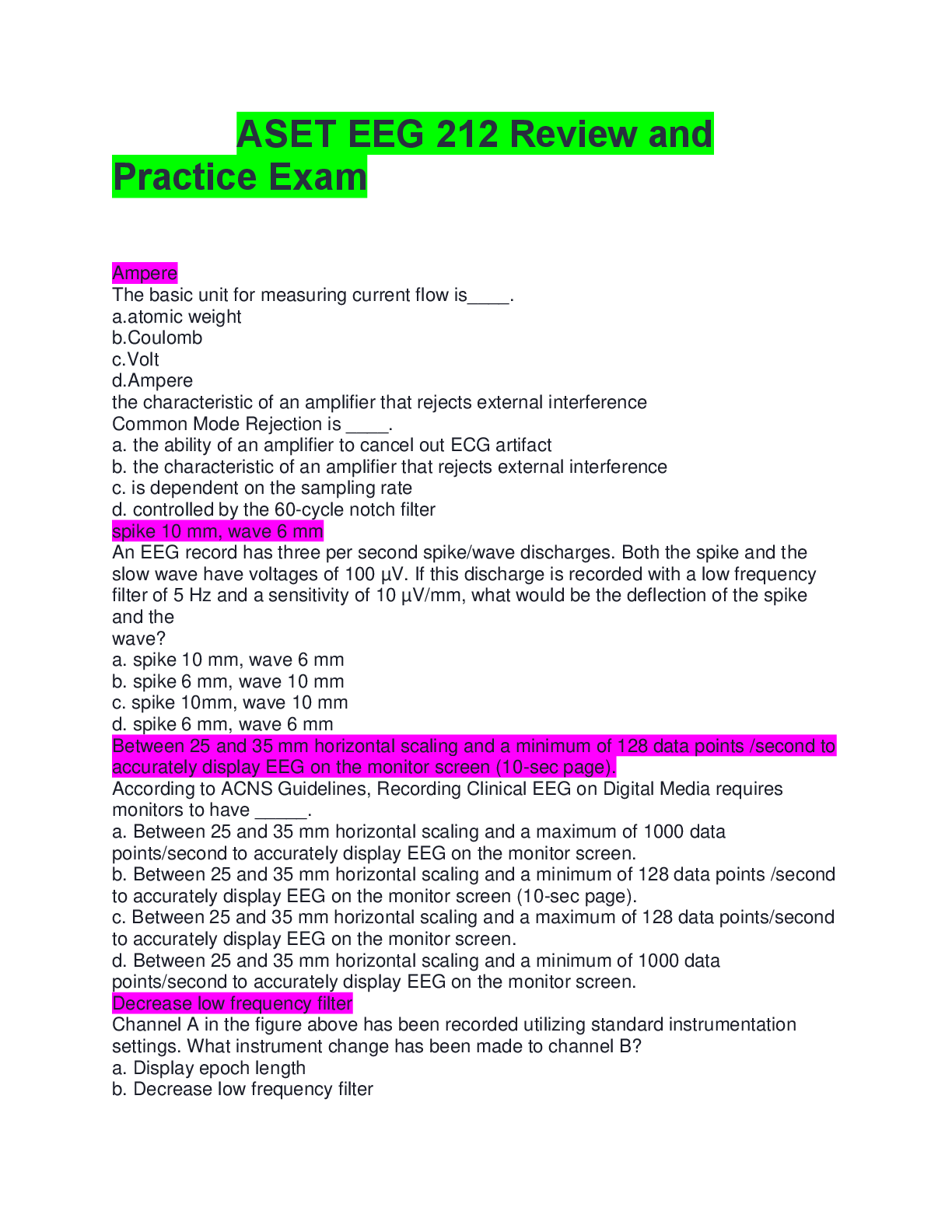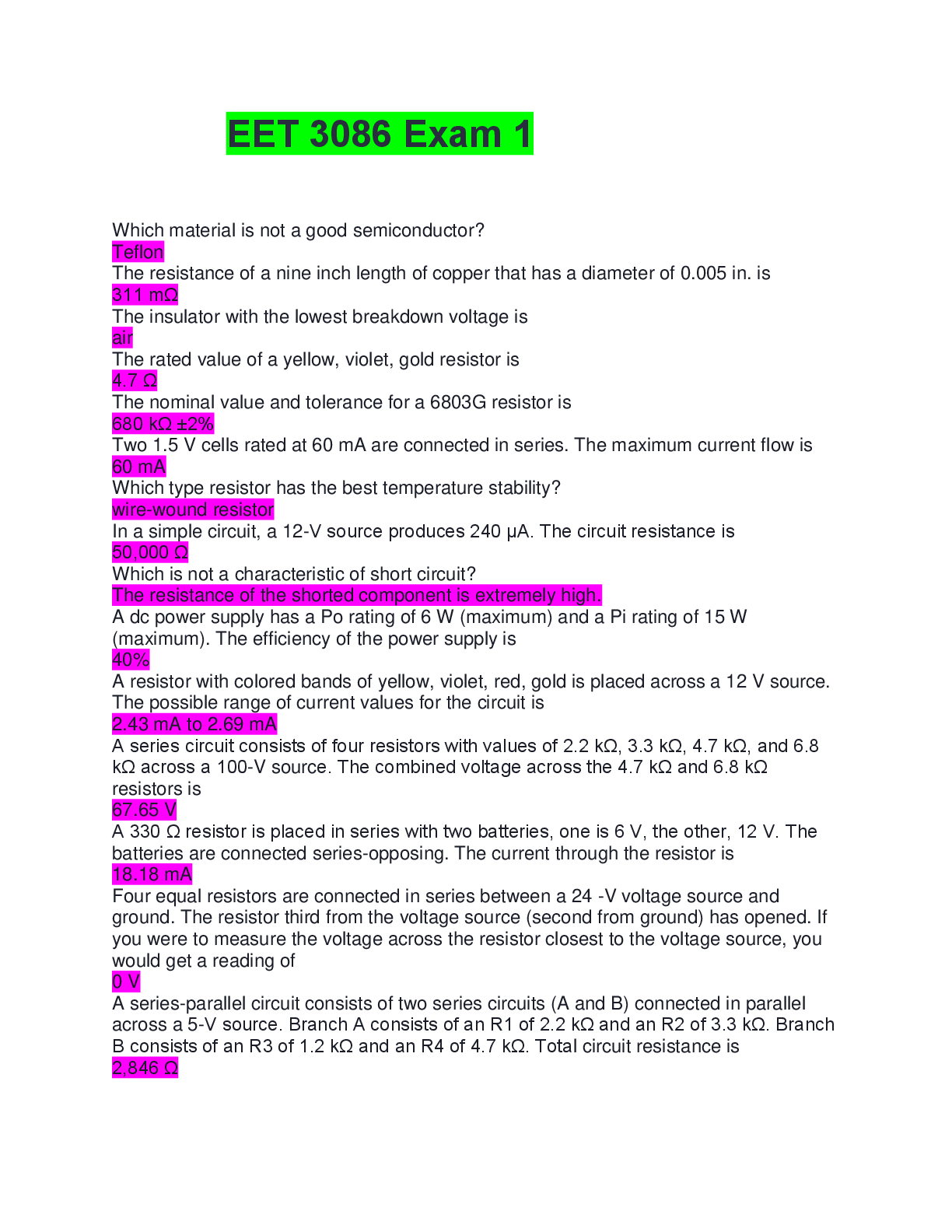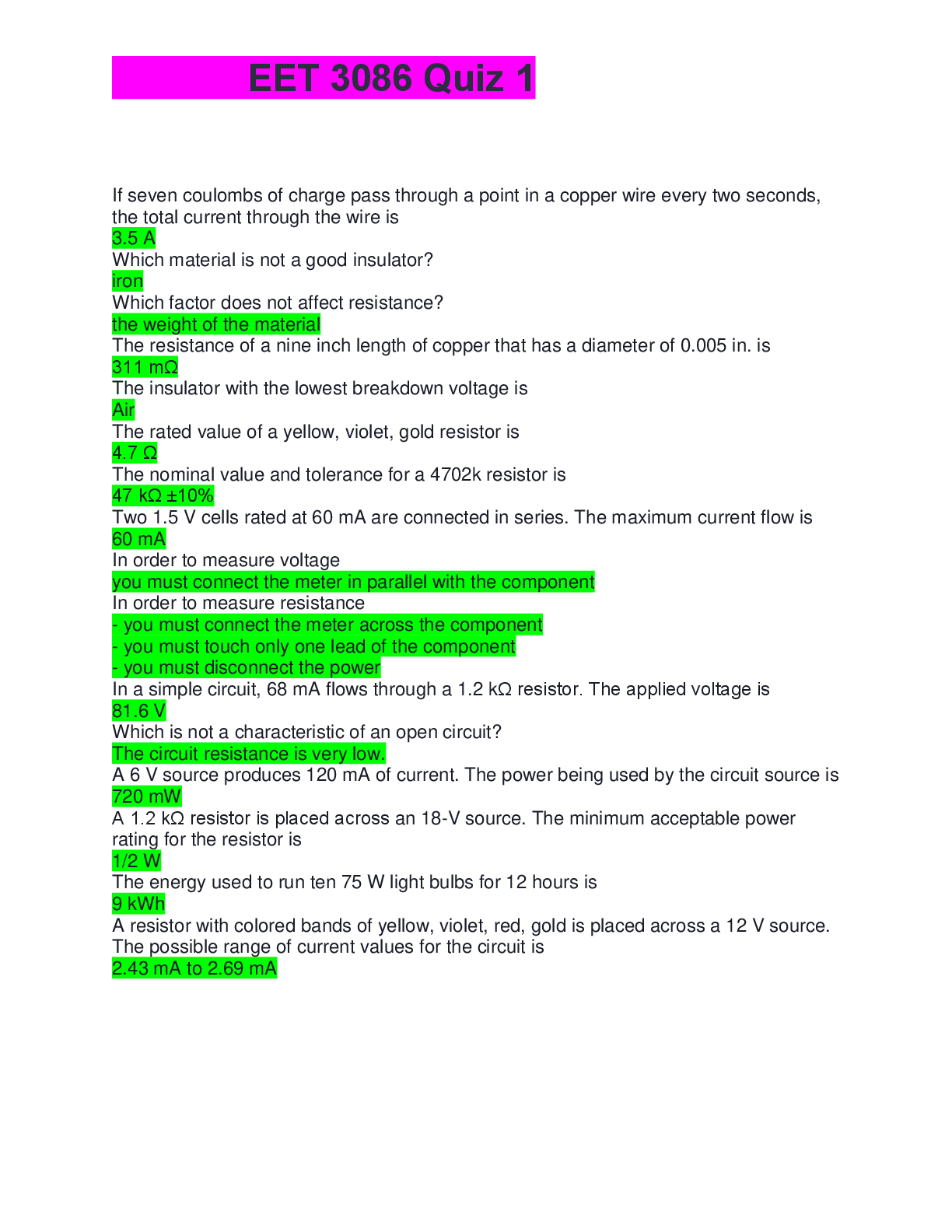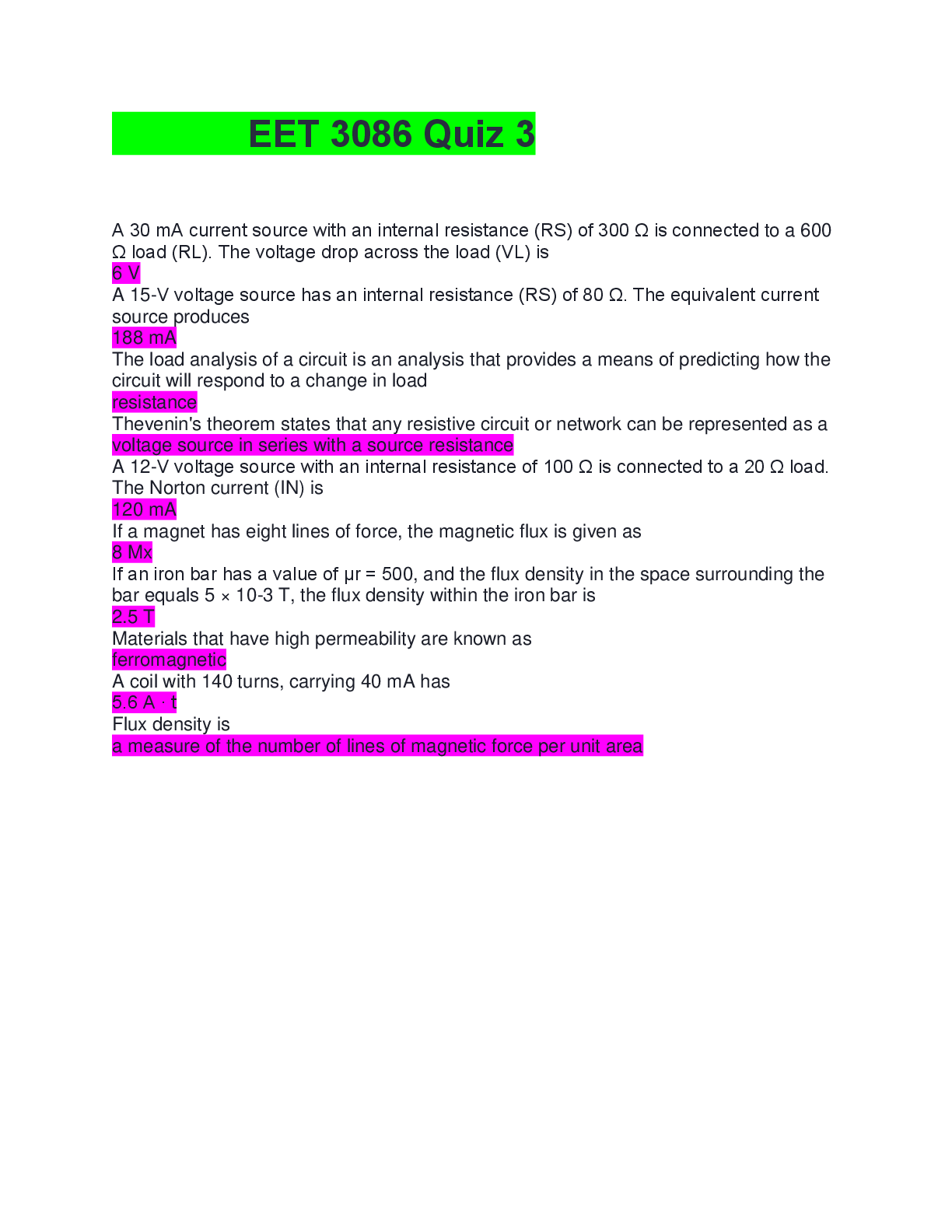Environmental Science > EXAM > ENV 101 Intro to Environmental Science,100% CORRECT (All)
ENV 101 Intro to Environmental Science,100% CORRECT
Document Content and Description Below
Exam 3Annual Editions Articles Review 1. As noted in “How to Feed 8 Billion People,” in the United States and Canada, which rank at the top of the food-consumption charts, grain is consumed p ... rimarily in its original state. 2. As asserted in “How to Feed 8 Billion People,” the most massivethreat to food security that humanity has ever known is the: a. rapid increase in the global population. b. overfishing of the world’s oceans. c. conversion of grain to protein products. d. melting of India and China’s mountain glaciers. 3. As described in “How to Feed 8 Billion People,” the gold standard ofirrigation efficiency is: a. a system of dams that deliver water to farmers through a network of canals. b. drip irrigation. c. low-pressure overhead sprinkler systems. d. the practice of raising the price of water to encourage a reduction in use. 4. As asserted in “Climate Change: How a Warming World Is a Threat to Our Food,” no population on Earth will remain insulated from the huge changes in food production that the rest of the century will bring. 5. As mentioned in “Climate Change: How a Warming World Is a Threat to Our Food,” two major crops in the Americas that should thrive in a climate change are: a. quinoa and potatoes. b. corn and sorghum. c. wheat and barley. d. soybeans and plantains. 6. As cited in “Climate Change: How a Warming World Is a Threat to Our Food,” Oxfam warns that the ones who will bear the brunt of the negative impacts of climate change in Africa will be small-scale farmers in: a. the Horn of Africa. b. Mauritania. c. Ghana. d. Angola. 7. As described in “Could Food Shortages Bring Down Civilization?”, if China turns to the world market for massive quantities of grain: a. U.S. citizens will compete with the Chinese for food. b. grain prices will go down, alleviating food shortages in other countries. c. the United States will be forced to restrict exports. d. the United States will be forced to sell U.S. Treasury securities to China. 8. According to “Could Food Shortages Bring Down Civilization?”, the only way to stop the current world food shortage is to: a. produce more food. b. force poor nations to control their populations. c. reverse the environmental trends that are causing it. d. depend on individual countries to act in their own best interests. 9. As mentioned in “Understanding Water Scarcity,” since technological development can have an impact on water security, there are certain measurements that use an estimated: a. pollutants-per-person factor. b. production-feasibility factor. c. investment-benefits factor. d. social-responsibility factor. 10. As noted in “Understanding Water Scarcity,” the water-stress index fails to account for whether or not water resources are accessible or drinkable. 11. According to “The World’s Water Challenge,” the region with the greatest supply of usable water is located in the: a. U.S. Northeast. b. western regions of China. c. Amazon basin. d. northern regions of Europe. 12. In the United States, as presented in “The World’s Water Challenge,” there is the risk that water is being overdrawn, resulting in potential shortages, in the: a. state of Florida. b. Great Lakes region. c. Colorado River system. d. Midwestern states. 13. At this moment in history, as maintained in “The World’s Water Challenge,” it is inconceivable that no generally recognized “worth” for water has been established to ensure its more efficient allocation. 14. As defined in “Global Water Crisis,” where the reliable water supply is being used up more quickly than it can be replenished, the result is what is known as: a. negative impact. b. sum negative. c. consumption glut. d. water stress. 15. As discussed in “Global Water Crisis,” urban-rural competition for water has already pushed countries to import “virtual water”—that is, to import: a. milk. b. grains. c. icebergs. d. alcoholic beverages. 16. As cited in “Global Water Crisis,” some experts say the problem is perhaps more an issue of recognizing water’s true value, using it efficiently, and planning for the lean times, than it is a lack of overall supply. 17. As related in “Global Water Crisis,” drought specialist Richard Seager predicts that by midcentury in the American Southwest, the aridity levels experienced during the Dust Bowl of the 1930s and again in the 1950s: a. may be periodically experienced. b. could be many times worse. c. will be the new normal. d. are not likely to be repeated, but levels will be greater than now. 18. As reported in “Global Water Crisis,” from his first-hand work experience, UpmanuLall, director of the Water Center at Columbia University, uses the phrase “a basket case for water” to describe: a. Afghanistan. b. Senegal. c. Cambodia. d. India. 19. As reported in “The Big Melt,” when 17 climbers tried to scale the peak of Kawagebo Mountain in 1991, the result was that: a. the mountain was scaled for the first time. b. all 17 members of the expedition died in an avalanche. c. the climbers were forced to turn back short of their goal. d. three climbers scaled the peak, but the remaining climbers had to be rescued by local guides. 20. The author of “The Big Melt” depicts the struggle of Chaya, the wife of a fortune-teller, as she tries to find water on a typical day in the city of: a. Shanghai. b. Delhi. c. Nairobi. d. Mexico City. 21. As put forth in “The Big Melt,” the melting glaciers paradoxically mean too much water in some places and too little in others. 22. As included in “Michael Pollan on the Links between Biodiversity and Health,” Pollan mentions fermentation—whether you are talking about tea, bread, or beer—and those who have a completely different relationship to bacteria than most of us do are the “passionate fermentation geeks,” whom he refers to as: a. scum lovers. b. fizzheads. c. yeast beasts. d. fermentos. 23. According to “Michael Pollan on the Links between Biodiversity and Health,” there is a common bacterium that all humans have in their guts, but the Japanese version of it has a gene that allows it to do what American guts cannot, which is to break down: a. raw soy. b. seaweed. c. terrapin. d. cuttlefish. 24. As noted in “Michael Pollan on the Links between Biodiversity and Health,” Pollan is amused by the term “specialty crop”—USDA lingo for anything you grow that you could actually eat. 25. As stipulated in “The Human Factor,” if an area of habitat is reduced to 10 percent of its original area, the number of species lost to extinction will be: a. 90 percent. b. 50 percent. c. 20 percent. d. 10 percent. 26. As set out in “The Human Factor,” prior to the impact of modern humans, the rate of creation and extinction of species was: a. roughly an equilibrium. b. highest on islands. c. determined by biodiversity. d. illustrated by the French riddle of the lily pads. 27. As noted in “The Human Factor,” E.O. Wilson feels that because we have always found a way around our exponential population growth through technology, human genius and the planet’s resources will someday enable us to keep our environment sustainable. [Show More]
Last updated: 3 years ago
Preview 1 out of 4 pages
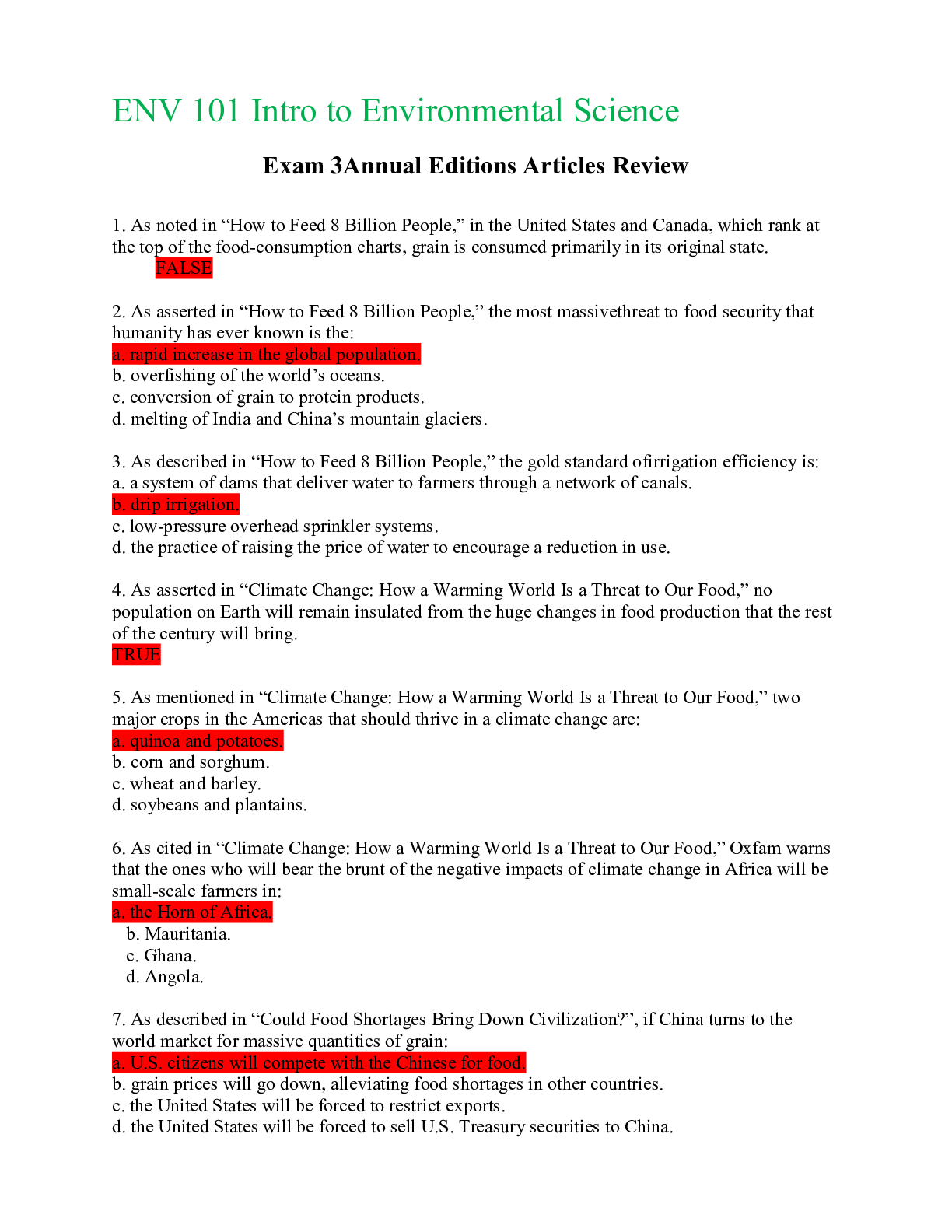
Buy this document to get the full access instantly
Instant Download Access after purchase
Buy NowInstant download
We Accept:

Reviews( 0 )
$13.00
Can't find what you want? Try our AI powered Search
Document information
Connected school, study & course
About the document
Uploaded On
Nov 04, 2020
Number of pages
4
Written in
All
Additional information
This document has been written for:
Uploaded
Nov 04, 2020
Downloads
0
Views
91



